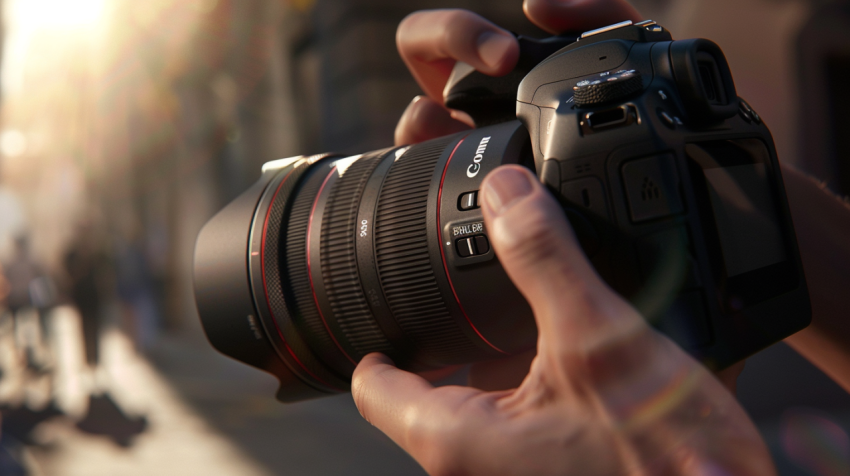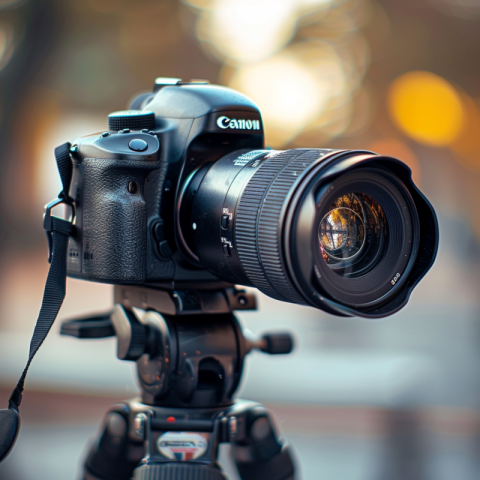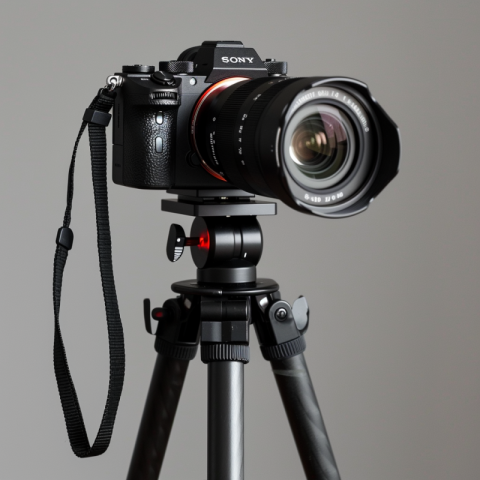











The Evolution of the Camera: From Obscura to Smartphones and Beyond
The camera, a device that captures and records images, has undergone a remarkable evolution from its rudimentary beginnings to the sophisticated technology we use today. From the camera obscura to digital single-lens reflex cameras (DSLRs) and the ubiquitous smartphone cameras, this evolution has not only transformed photography but also profoundly impacted how we see, interact with, and document the world. This exploration delves into the captivating history of the camera, examines various camera types and their key components, analyzes their impact on society, and looks ahead to future trends in camera technology.
1. Early History and the Camera Obscura:
- Camera Obscura (Latin for "dark chamber"): The earliest precursor to the camera, dating back to ancient Greece and China. It was a darkened room or box with a small hole that projected an image of the outside world onto the opposite wall.
- 16th-18th Centuries: Artists used the camera obscura as a drawing aid. Lenses were added to improve the brightness and sharpness of the projected image. Portable versions were developed.
- Early 19th Century: The challenge was to make the projected image permanent.
2. The Birth of Photography (19th Century):
- Nicéphore Niépce (1765-1833): A French inventor credited with producing the first known photograph, "View from the Window at Le Gras" (c. 1826), using a process called heliography.
- Louis Daguerre (1787-1851): Developed the daguerreotype process, which produced highly detailed, one-of-a-kind images on silver-plated copper sheets. This marked the first commercially successful photographic process.
- William Henry Fox Talbot (1800-1877): Invented the calotype process, a negative-positive process that allowed for the creation of multiple prints from a single negative.
- 1850s-1880s: Various improvements to photographic processes, including the collodion process, which produced sharper images and shorter exposure times. The development of dry plates made photography more convenient.
- George Eastman (1854-1932): Founded Kodak and revolutionized photography with the introduction of flexible roll film and the first mass-marketed camera, the Kodak Brownie, under the slogan "You press the button, we do the rest."
3. The 20th Century: Film Cameras and Mass Adoption:
- Roll Film Cameras: Became widely popular, making photography accessible to the general public.
- 35mm Film: Became the standard format for many cameras, offering a good balance of image quality, portability, and cost.
- Single-Lens Reflex (SLR) Cameras: Allowed photographers to see exactly what the lens saw through the viewfinder, providing more accurate framing and focusing.
- Twin-Lens Reflex (TLR) Cameras: Used two lenses, one for viewing and one for taking the picture.
- Rangefinder Cameras: Used a rangefinder focusing system, known for their compact size and quiet operation.
- Instant Cameras: Popularized by Polaroid, these cameras produced prints within minutes of taking the picture.
- Development of Color Photography: Technological advancements led to the widespread adoption of color film.
4. The Digital Revolution (Late 20th and 21st Centuries):
- Digital Sensors: Replaced film as the image-capturing medium, using electronic sensors to convert light into digital data.
- Digital Single-Lens Reflex (DSLR) Cameras: Combined the advantages of SLR cameras with digital sensors, offering high image quality, interchangeable lenses, and advanced features.
- Mirrorless Cameras: A newer type of camera that eliminates the mirror and optical viewfinder found in DSLRs, resulting in smaller and lighter bodies.
- Compact Cameras (Point-and-Shoot): Smaller, simpler cameras designed for ease of use.
- Smartphone Cameras: The integration of cameras into smartphones has made photography more ubiquitous than ever before. Smartphone cameras have rapidly improved in quality and features, becoming the primary camera for many people.
- Action Cameras: Compact, rugged cameras designed for capturing action sports and other activities. (e.g. GoPro)
- 360-degree Cameras: Capture a spherical field of view, allowing for immersive images and videos.
5. Key Camera Components:
- Lens: Focuses light onto the sensor or film. Different types of lenses offer varying focal lengths and perspectives (e.g., wide-angle, telephoto, macro).
- Sensor (or Film): The light-sensitive component that captures the image. In digital cameras, the sensor converts light into electrical signals.
- Shutter: Controls the duration of time that the sensor or film is exposed to light.
- Aperture: An adjustable opening in the lens that controls the amount of light entering the camera and affects the depth of field.
- Image Processor: In digital cameras, the processor converts the data from the sensor into a digital image file.
- Viewfinder: Allows the photographer to see the scene being captured (optical in DSLRs, electronic in mirrorless cameras).
- LCD Screen: Used for reviewing images, navigating menus, and composing shots in live view mode.
- Storage: Digital cameras store images on memory cards.
6. Camera Features and Technologies:
- Autofocus: Automatic focusing systems that use sensors and motors to quickly and accurately focus on subjects.
- Image Stabilization: Reduces blur caused by camera shake, especially useful in low light or with telephoto lenses.
- Exposure Modes: Different modes that control how the camera sets the shutter speed, aperture, and ISO (e.g., aperture priority, shutter priority, manual mode).
- ISO Sensitivity: A measure of the sensor's sensitivity to light. Higher ISO settings allow for shooting in low light but can introduce more noise (grain) into the image.
- White Balance: Adjusts the color temperature of the image to match the lighting conditions.
- Metering: Measures the brightness of the scene to determine the correct exposure.
- Flash: Provides artificial light for illuminating subjects in low-light situations.
- Video Recording: Most modern cameras can also record video.
- Wi-Fi and Bluetooth: Allow for wireless transfer of images and remote camera control.
7. Impact of Cameras on Society:
- Documentation and History: Cameras have played a crucial role in documenting historical events, social change, and everyday life.
- Art and Expression: Photography has become a major art form, allowing artists to express their creativity and vision.
- Journalism and Photojournalism: Cameras are essential tools for journalists, providing visual evidence of news events.
- Science and Research: Cameras are used in various scientific fields, from astronomy to microscopy, to capture and analyze images.
- Social Media and Communication: Cameras, particularly smartphone cameras, have transformed the way we communicate and share our lives with others.
- Surveillance and Security: Cameras are used for security purposes, raising ethical concerns about privacy.
- Personal Memories: Cameras allow us to capture and preserve personal memories, creating a visual record of our lives.
8. Future Trends in Camera Technology:
- Computational Photography: Using software and artificial intelligence to enhance images and create new photographic possibilities.
- Mirrorless Technology Advancements: Mirrorless cameras are expected to continue to improve in performance and features, potentially surpassing DSLRs.
- Sensor Technology: Ongoing development of larger, more sensitive sensors with higher resolution and improved low-light performance.
- Artificial Intelligence (AI): AI is being integrated into cameras to improve autofocus, scene recognition, and image processing.
- Virtual and Augmented Reality (VR/AR): Cameras are being developed to capture and create content for VR and AR experiences.
- 8K Video and Beyond: Higher resolution video capture will become more common.
Conclusion:
The camera's evolution from a simple light-proof box to a sophisticated digital device has been a remarkable journey of innovation. Cameras have not only transformed the art of photography but have also had a profound impact on how we perceive, document, and interact with the world. As technology continues to advance, cameras will undoubtedly continue to evolve, offering new possibilities for capturing and sharing images, shaping our visual culture, and pushing the boundaries of what's possible in visual storytelling.
Camera, Photography, Digital Camera, DSLR, Mirrorless Camera, Lens, Sensor, Shutter, Aperture, Exposure, ISO, Autofocus, Image Stabilization, Camera Obscura, History of Photography, Film Camera, 35mm Film, Point-and-Shoot Camera, Action Camera, 360 Camera, Smartphone Camera, Camera Lens Types, Wide-Angle Lens, Telephoto Lens, Macro Lens, Prime Lens, Zoom Lens, Image Quality, Resolution, Megapixels, Image Processor, RAW, JPEG, Video Recording, 4K Video, 8K Video, Photography Techniques, Composition, Lighting, Portrait Photography, Landscape Photography, Street Photography, Wildlife Photography, Sports Photography, Astrophotography, Macro Photography, Photojournalism, Documentary Photography, Fine Art Photography, Commercial Photography, Fashion Photography, Wedding Photography, Camera Modes, Aperture Priority, Shutter Priority, Manual Mode, Program Mode, White Balance, Metering Modes, Flash Photography, External Flash, Built-in Flash, Image Editing, Photoshop, Lightroom, Capture One, Photo Editing, Photography Workflow, Camera Bag, Tripod, Memory Card, Camera Accessories, Camera Settings, Photography Tips, Photography for Beginners, Advanced Photography Techniques, Photography Tutorials, Photography Courses, Photography Workshops, Photography Books, Photography Magazines, Photography Websites, Photography Blogs, Photography Forums, Photography Communities, Photography Contests, Photography Awards, Photography Exhibitions, Famous Photographers, Ansel Adams, Henri Cartier-Bresson, Annie Leibovitz, Dorothea Lange, Robert Capa, History of Cameras.

